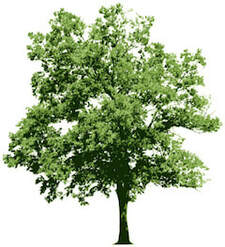 Trees make life possible for every living creature on Earth. They give us the air we breathe, absorb excess carbon in the atmosphere, and provide us fruits to eat. Not to mention, they make our environment pleasing.
Trees make life possible for every living creature on Earth. They give us the air we breathe, absorb excess carbon in the atmosphere, and provide us fruits to eat. Not to mention, they make our environment pleasing.
We owe trees a lot, and it is our responsibility to keep them in good health and shape. One of the most effective ways to keep your tree healthy is by pruning it regularly. It does not only take care of the tree’s health but also its shape and appearance. But, keep in mind that improper pruning is detrimental to your tree.
Here are some essential tips for tree pruning and the right way to do it according to Jim at Grace Tree Service Spokane
Tip #1: Proper Preparation for Tree Pruning
Don’t go to any battle without weapons. The same rule applies to tree pruning. You need to have the proper tools and equipment to complete pruning safely and correctly.
Protect Yourself
Your safety should come first. Wear personal protective equipment to keep yourself safe from debris and other sharp equipment you will use in pruning. Always wear safety glasses, a thick long-sleeved shirt, and heavy-duty work gloves. Remember that you will be working with sharp equipment, that is why it is important to keep your body protected at all times.
Use a Good Ladder
Don’t forget to get a durable ladder. You will need to use a ladder to reach branches at the top end of the tree. It is recommended to use a ladder with adjustable height so you can be on the right spot when pruning higher limbs.
Use the Right Tools
Secure a good pair of pruning shears which is ideal for trimming thin branches. If you’re pruning a tall tree, you will need a long-handled pruning saw. Whatever handheld tool you will use, make sure it is in good condition. Using dull equipment can put you at risk and harm your tree in the end.
Tip #2: Prune at the Right Season
The timing of pruning is crucial to the health of your tree. You need to know whether your tree would benefit in winter pruning or summer pruning because every tree species can be different in this matter. In most cases, it is best to prune in winter when the tree is in a dormant state. This will give the tree time to recover come the spring season. If you want to stunt the growth of your tree, you should prune in the summer.
As much as possible, do not prune in the fall or the end of summer because trees become more vulnerable to fungus growth during this time. It is also more difficult for trees to recover in the cold weather. This makes your tree more prone to getting infected by diseases.
Tip #3: What is Your Goal in Pruning
It is essential to know why you are pruning in the first place so you can identify which branches to cut away.
Trim back branches instead of removing them if you want to enhance the shape of your tree. If you are after the health of the tree, you need to get rid of all dead and damaged branches and limbs. If you are pruning for safety, you should inspect the tree carefully and locate rotting and broken limbs that can fall anytime.
Tip #4: Prune Properly
Making a proper cut when pruning is key to keeping the tree alive and healthy. Improper pruning will potentially expose the tree to disease and could kill the tree.
The key to successful pruning is making the right cut. When done correctly, your tree can reap the benefits of pruning. However, with one wrong cut, you can put your tree at risk of getting damaged or dying prematurely.
Be Informed and Make Yourself Ready
Don’t go to your yard and start pruning until you know everything there is to know. It is essential to be armed appropriately to do the job correctly and not put yourself and your property in danger.
If you need to learn more about tree pruning, you can always contact a professional tree service. They would be able to provide you with professional advice so you would know how to take care of your tree in the years to come.